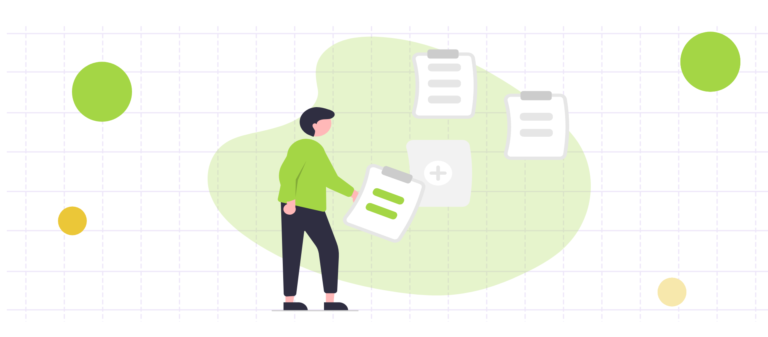The Donor Engagement Cycle: How to Keep Your Supporters Coming Back for More

Let's face it: finding donors is hard, but keeping them? That's the real challenge. Enter the donor engagement cycle - your roadmap to turning one-time givers into lifelong supporters.
What is the Donor Engagement Cycle?
Think of it as a relationship journey. Just like you wouldn't propose on a first date, you shouldn't ask for a major gift after a first donation. The donor engagement cycle maps out how to nurture these relationships through strategic touchpoints.
The Stats Don't Lie
- Only 19% of first-time donors make a second gift (Association of Fundraising Professionals)
- It costs 5x more to acquire a new donor than to retain an existing one
- A 10% increase in donor retention can increase lifetime value by over 200%
- Organizations with structured engagement cycles see 40% higher donor retention rates
Breaking Down the Cycle
1. Identification & Research
Before you can engage, you need to know who you're talking to. Who are your potential donors? What motivates them?
2. First Contact & Cultivation
The first impression matters! Whether it's through an event, social media, or a personal connection, this is where you introduce your mission.
3. The Ask
You've built the relationship, now it's time to invite participation. Remember, 75% of donors say the way they're asked is just as important as the cause itself.
4. The Thank You (So Important!)
Did you know organizations that send thank-you notes within 48 hours see 400% higher retention rates? Yet 65% of donors never receive a proper thank you.
5. Reporting & Recognition
Show donors their impact! 90% of donors say they'd give again if they understood the difference their donation made.
6. Deeper Engagement
Volunteer opportunities, advisory roles, event invitations - these deepen the relationship beyond the transaction.
7. Repeat!
A donor who gives three times is 50% more likely to continue giving than someone who's given just once.
Why Does This Matter?
In a world where donor acquisition costs keep rising (up 15% in the last five years), focusing on engagement isn't just nice—it's necessary. Organizations with mature engagement cycles report 60% higher lifetime donor values.
Best Practices for Donor Management
Understanding donor behavior is critical to successful fundraising. Here's how to level up your donor management game:
Donor Segmentation
Break your donor database into meaningful groups. Organizations that segment by giving history, interests, and demographics see 38% higher response rates. Why? Because different donors need different donor interactions. A first-time $25 donor doesn't want the same communication as your $10,000 annual supporter.
Leverage Multiple Marketing Channels
Research shows that donor preferences for communication vary widely by age and background. While 62% of donors over 65 prefer direct mail, 76% of millennial donors want digital engagement. The best approach? Meet donors where they are with consistent messaging across platforms.
Smart Timing of Requests
Data reveals that poorly timed asks are the #1 reason donors stop giving. Study your donor behavior patterns to identify optimal request windows. December isn't the only giving season – many organizations see spikes in April and September too.
Implement Robust Donor Management Systems
Organizations using dedicated donor management systems report 20% higher retention rates. These systems help track interactions, automate follow-ups, and identify giving patterns that might otherwise go unnoticed.
Personalization Beyond Name Fields
Advanced donor segmentation allows for true personalization. Donors who receive content relevant to their specific interests give 49% more annually. This means tracking which programs they care about and tailoring your communication accordingly.
The Importance of Donor Engagement
Why should you care about donor engagement? Here's the deal:
It's Cheaper to Keep 'Em
Replacing lost donors is expensive and getting pricier. The average cost to acquire a new donor has risen to $1.25 for every $1 raised in their first year. Meanwhile, retained donors cost just $0.20 per dollar raised. That math isn't complicated!
They Become Your Best Recruiters
Highly engaged donors are 3x more likely to refer others to your organization. When your donor appreciation efforts hit the mark, they don't just give more—they bring friends.
Engagement Predicts Major Gifts
Studies show that 87% of major gift donors were regular, engaged smaller-dollar contributors first. Creating meaningful touchpoints today builds your major gift pipeline for tomorrow.
They Provide More Than Money
Engaged donors volunteer twice as much as non-engaged donors. Those volunteer hours represent an additional $27.20 per hour in value (Independent Sector's valuation). Solid donor appreciation strategies turn financial supporters into multi-resource assets.
They Weather Economic Storms
When recession hits, engaged donors reduce giving by just 5% on average, while casual donors cut back by 40%+. Building those relationships is your nonprofit's insurance policy.
They Give Valuable Feedback
Your most engaged supporters are your best focus group. Organizations that regularly seek donor input report making program adjustments that improved outcomes by an average of 23%. That's impact you can't buy.
Strategies for Successful Donor Engagement
Want to slash donor attrition rates? These proven strategies can help you build deeper connections that last:
Hire a Dedicated Donor Engagement Officer
Organizations with a dedicated donor engagement officer see 27% higher retention rates. This specialist focuses exclusively on nurturing relationships rather than just securing gifts, creating personalized touch points throughout the year.
Tailor Approaches Based on Donor Demographics
Donor demographics dramatically impact engagement preferences. Baby boomers respond to phone calls and formal recognition, while Gen Z donors prefer text updates and social impact stories. Customize your approach accordingly!
Create Multi-Touchpoint Engagement Plans
Top-performing nonprofits maintain 7-12 meaningful touchpoints annually with donors. These aren't all asks! A strategic engagement plan includes updates, stories, volunteer opportunities, and simple appreciation notes.
Monitor the Right Engagement Metrics
Look beyond dollars. Advanced engagement metrics include website interaction time, email open rates, event attendance, and social sharing. Organizations tracking these indicators can predict and prevent donor attrition months before it happens.
Study Donor Behaviors Beyond Giving
What content do they consume? Which events do they attend? Understanding donor behaviors holistically reveals engagement opportunities you'd otherwise miss. One study found that donors who read quarterly impact reports gave 23% more than those who didn't.
Build Segmented Communication Streams
Different donor segments need different journeys. Using advanced donor segmentation, create specific communication tracks for: - First-time givers (focus on second gift conversion) - Loyal small-dollar donors (focus on monthly giving conversion) - Mid-level donors (focus on deeper program connection) - Major donors (focus on personalized impact reporting)
Quick Tips to Improve Your Cycle Today
- Segment your communications (personalized messages get 29% higher open rates)
- Create a multi-channel approach (donors engaged on 3+ channels give 3x more)
- Track engagement metrics beyond just dollars
- Ask for feedback (donors who are asked for input give 56% more)
Remember, at the heart of the donor engagement cycle isn't spreadsheets or strategies—it's relationships. The organizations that remember the human behind the donation are the ones that thrive.
What's your donor engagement looking like these days?
Frequently Asked Questions
What exactly is the donor engagement cycle?
The donor engagement cycle is the strategic process of building relationships with donors from initial contact through repeated giving. It includes identification, cultivation, solicitation, stewardship, and re-engagement phases designed to strengthen donor connections over time.
How does donor engagement affect retention rates?
Organizations with structured engagement cycles see 40% higher donor retention rates. When donors feel connected to your mission and appreciated for their contributions, they're significantly more likely to give again.
What's the biggest mistake nonprofits make with donor engagement?
The most common mistake is treating all donors the same way. Effective engagement requires segmentation based on giving history, interests, and communication preferences. Generic approaches lead to disengagement and increased donor attrition.
How often should I communicate with donors?
Research shows that high-performing nonprofits maintain 7-12 meaningful touchpoints annually with donors. However, quality matters more than quantity. These touchpoints should include a mix of updates, appreciation, impact stories, and carefully timed requests.
Do I need special software for donor engagement?
While dedicated donor management systems improve retention rates by about 20%, you can start with simple tools. The key is consistent tracking of interactions, preferences, and giving history. As your donor base grows, investing in specialized software becomes increasingly valuable.
How do I measure if my donor engagement is working?
Look beyond just dollars raised. Key engagement metrics include retention rate, average gift size growth, lifetime value increase, referral rate, event participation, volunteer conversion, and digital engagement (email opens, website visits, social interactions).
Can small nonprofits implement effective donor engagement?
Absolutely! Small organizations often have an advantage in creating personal connections. Start with simple segmentation (new vs. recurring donors), consistent thank-you protocols, and impact updates. As you grow, you can implement more sophisticated strategies.
.svg)



